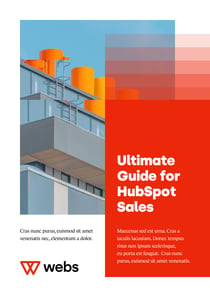Selling your product or service has always been really important for companies. This makes sense – if you don't sell, you don't cover your costs and your company's existence is no longer justified. Here in Eindhoven, a number of tech companies (including Philips) learnt this the hard way in the 80s and early 90s, when a lack of marketing expertise led to the demise of products such as the Video 2000, CD-I, and DCC and ensuing heavy losses for those companies.
In the market of 25 years ago, matching supply and demand was relatively easy. You came up with a product or service, made sure potential buyers knew you existed, and made the deal. Even in today's complex world, this is still pretty much how it works. Both supply and demand, however, have seen some major changes regarding the complexity, diversity, and sheer number of channels, markets, products, and services. Good luck trying to market your product or service under these circumstances!
That is, if you even manage to do so, because unlike 25 years ago, digital information has given the purchasing party (the demand side) much more power. As a provider, you will have to become visible in their purchasing process. On the other hand, in the current commercial process, IT technology doesn't just improve the information position of the purchasing party, but that of the selling party as well. And that goes beyond a basic CRM system.
In theory, every B2B company can be a mini Google or Apple
Many companies envy Google or Apple because of the data they have on millions, even billions of people who use their services or products. Basically, this data is their revenue model. Now, we're not saying you can set up your company according to the same data-driven business model. What you can do, however, is use smart and modern technology to make sure that the sales process – and, more importantly, the customer's purchasing process – are as free of friction and frustration as possible, which will help your business grow. And that's what it's all about.
Web 2.0 and beyond
We can make a clear distinction between newer and relatively older B2B companies. Let's look at B2B companies that have based their business model on knowledge and skills from way before 2010 first. At that time, internet technology played only a marginal role in the commercial process. All companies needed was a website and that wonderful medium, email. With the arrival of web 2.0 technology, a new generation of tools came onto the market, almost all of which were cloud based. And it's these modern, cloud-based sales, marketing, and customer service tools that can make a world of difference for many of the aforementioned companies.
Information paradox
Many old-school B2B companies have built their leading position in their market – which is often a niche market – on the back of their leading position in product technology. With this product-centric focus, they were perfectly able to target the market using trade fairs and traditional sales channels and establish their position using information scarcity in the market.
Today, however, we're no longer dealing with information scarcity, but rather the opposite: information abundance. Now, whatever you type into a search engine will yield thousands of results, which will help you quickly gather information to make an informed choice or gain knowledge about a certain topic. As a company, you'll have to be willing to be part of this process and claim your authority.
Stop selling, start helping
The right place, the right information, at the right time – that's the main obstacle for many traditional B2B companies. They lack the ability to showcase the knowledge and skills they have as market leaders in the customer's purchasing process. In fact, many companies are reluctant to do so, because protecting their knowledge is how they reached their position in the first place.
Now we're not telling you to simply throw all your business secrets on the internet. Please don't! We do recommend, however, that you unlock that knowledge in such a way that it matches a potential customer's needs. Don't think 'slick sales pitch' – it should really help the potential customer in making an informed choice.
Information about your prospect
The adages of 'knowledge is power' and 'you get what you give' have never been more true than in the current digital age. So unlock that knowledge and make your website your best sales person. Not to close the deal on the spot, like in e-commerce, but for both parties to gauge whether there's a win-win.
Too often, we see hungry salespeople forgetting about their prospects. Gathering information or data about a potential customer is extremely interesting. The more – automatically organised – information you have, the higher your chances of doing business. This includes data about the size of the company, its DMU's size/complexity, its turnover, which pages a prospect has or hasn't viewed or opened, their history, but also how to address a prospect using AI profiling. And don't worry – you don't need to bring all this data together manually. That's what smart software is for.
Traditional vs. Modern Sales
In many areas in B2B, sales is still conducted traditionally. Things like generating leads, visiting these leads, and then closing deals. There's nothing wrong with these activities, of course – in fact, they're still at the heart of every sales process. No, what's new is that each of these three process steps must be carried out in a different way, using different instruments, and above all with a different mindset. That's how you make a decent profit.




